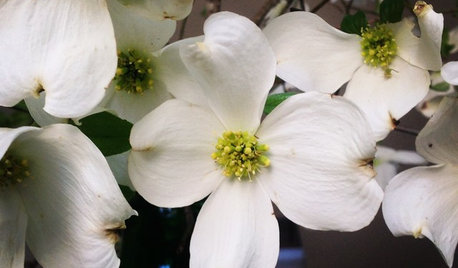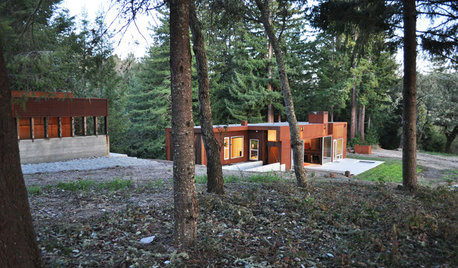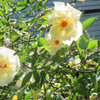Coulf fire blight be my problem?
floridarosez9 Morgan
11 years ago
Related Stories

FUN HOUZZDecorated Houses Help Save a Detroit Neighborhood
Art's a start for an inner-city community working to stave off urban blight and kindle a renaissance
Full Story
HEALTHY HOMESleep Happier and Healthier in a Toxin-Free Bedroom
Light pollution, toxic bedding, wallpaper that off-gases ... if you're not getting good sleep, these bedroom blights might be to blame
Full Story
MOST POPULAR8 Backyard Ideas to Delight Your Dog
Cue the joyous soundtrack. These pet-friendly landscape and garden ideas will keep your pooch safe, happy and well exercised outdoors
Full Story
GARDENING GUIDESGreat Design Plant: Cornus Florida Benefits Wildlife
Flowering dogwood provides fiery red foliage in fall and beautiful springtime blooms
Full Story
GARDENING GUIDESBackyard Birds: Invite Entertaining Hummingbirds Into Your Garden
Hummingbirds — unique to the Americas — zip through open landscapes seasonally or year-round. Here’s how to attract them
Full Story
LIVING ROOMSConversation Starter: Circular Seating
Looking to make a large space cozy or fit seating into a tight spot? Try using a ring of chairs
Full Story
HOUZZ TOURSHouzz Tour: Usonian-Inspired Home With All the Wright Moves
A Chicago couple's weekend retreat fulfills a long-held dream of honoring architect Frank Lloyd Wright
Full Story
EDIBLE GARDENSSummer Crops: How to Grow Tomatoes
Plant tomato seedlings in spring for one of the best tastes of summer, fresh from your backyard
Full Story
HOUZZ TOURSHouzz Tour: A Modern Getaway Nestled in the Trees
Nature views and bold materials star in a California vacation house for Chicago newlyweds
Full Story
HOUSEKEEPINGOut, Darn Spot! Tips for Removing Carpet Stains
Know the right solutions and when to use them to prevent stains from pets, soda, chocolate, blood and more
Full StoryMore Discussions











jerijen
catspa_NoCA_Z9_Sunset14
Related Professionals
Canton Landscape Architects & Landscape Designers · Forest Park Landscape Architects & Landscape Designers · Federal Way Landscape Contractors · Long Beach Landscape Contractors · Madera Landscape Contractors · Munster Landscape Contractors · Pueblo West Landscape Contractors · Wanaque Landscape Contractors · Markham Landscape Contractors · Vadnais Heights Landscape Contractors · Eastvale Swimming Pool Builders · Visalia Swimming Pool Builders · Agoura Siding & Exteriors · Paterson Siding & Exteriors · Iowa City Siding & Exteriorsmalcolm_manners
floridarosez9 MorganOriginal Author
rosefolly
malcolm_manners
User
floridarosez9 MorganOriginal Author
kittymoonbeam
michaelg
floridarosez9 MorganOriginal Author
floridarosez9 MorganOriginal Author
jerijen
User
floridarosez9 MorganOriginal Author
michaelg
dfredrick
dfredrick
Kippy
cath41
User
floridarosez9 MorganOriginal Author